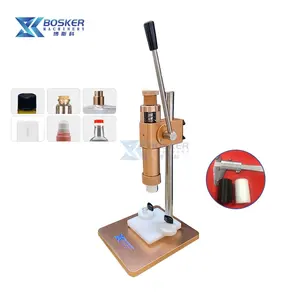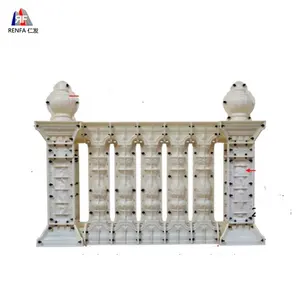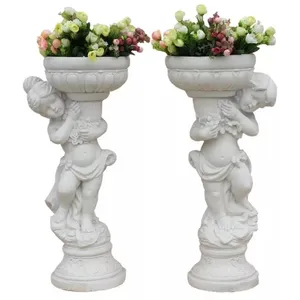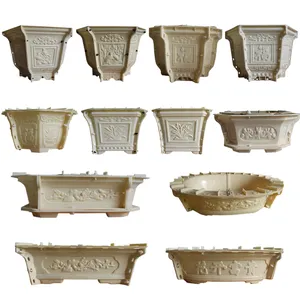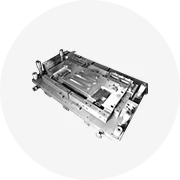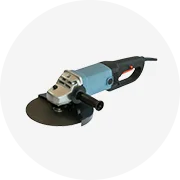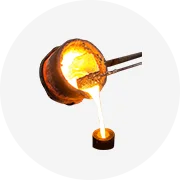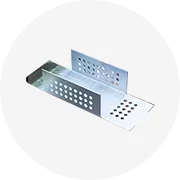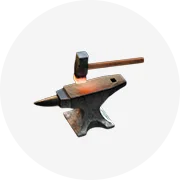Popular in your industry

































































































































































































Top categories
About metal molds for pots
In the manufacturing sector, metal molds for pots are fundamental in crafting a diverse array of cookware and plant containers. These molds are crucial for molding metals into both functional and visually appealing items, serving the demands of industrial and consumer markets. The complexity of pot metal casting molds requires meticulous engineering to ensure conformity with the precise specifications of the end product's design and utility.
Types and Materials of Metal Molds for Pots
The assortment of metal molds for pots is extensive, with each type boasting distinct features tailored to various manufacturing requirements. For example, aluminum pot molds are prized for their superior heat conduction, making them perfect for cookware production. Conversely, mild steel concrete flower pot molds are valued for their sturdiness, which is indispensable for the rigorous demands of outdoor and garden items. The lead melting pot for sinkers is a specialized variant, engineered to endure the elevated temperatures necessary for melting and shaping lead. These diverse mold types highlight the adaptability of metal molds, facilitating the creation of products ranging from delicate garden ornaments to fundamental culinary tools.
Structure and Shaping Mode of Pot Metal Casting Molds
The architecture of metal molds for pots reflects the advanced nature of contemporary manufacturing. Comprising various elements such as cores, cavities, ejector mechanisms, and cooling conduits, each mold is designed for harmonious operation. The cores and cavities delineate the internal voids and external contours of the pot, respectively, while the ejector mechanism aids in the release of the finished casting. Cooling conduits are judiciously integrated to manage the temperature, ensuring proper metal solidification. The die casting method, particularly with its cold runner system, excels in producing detailed designs and maintaining high production volumes without sacrificing the pots' structural soundness.
Materials and Their Properties
Selecting the appropriate material for metal molds for pots is paramount, with each material offering unique advantages. Aluminum molds are not only light but also exhibit high thermal conductivity, essential for swift heat dispersion during the casting process. Stainless steel is chosen for its longevity and corrosion resistance, guaranteeing an extended mold life and consistent pot quality. Mild steel is preferred for its resilience and cost-efficiency, suitable for larger molds that demand increased strength. The choice of materials hinges on the specific characteristics of the pot to be cast, such as its dimensions, shape, and the metal to be shaped.
Business Usages and Applications
Metal molds for pots are employed across a spectrum of commercial environments. In the realm of cookware, they are instrumental in producing pots and pans that satisfy the culinary needs of both professional chefs and domestic cooks. In horticulture, concrete flower pot molds are used to craft planters that are both sturdy and ornamental. The angling industry depends on lead melting pot and molds for fabricating various weights and sinkers crucial to fishing equipment. These molds not only support the large-scale manufacturing of merchandise but also guarantee that the products adhere to high standards of quality, thus generating substantial commercial value.
Functions and Features
The primary role of metal molds for pots is to precisely shape molten metal into practical items. They are engineered to endure the rigors of casting and are adept at producing intricate forms with fine details. Attributes such as thermal management and sophisticated ejector systems are fundamental to their functionality, ensuring efficient casting cycles and that the end products necessitate minimal post-production work. These characteristics enhance the molds' capacity to yield pots of uniform quality, which is a crucial competitive edge in the market.
Benefits and Advantages
The advantages of utilizing metal molds for pots are numerous. They deliver exceptional precision, which is vital for fabricating pots that align with stringent specifications. The molds' robustness leads to reduced production expenses over time, as they necessitate less frequent renewal. Moreover, the employment of environmentally friendly materials like stainless steel corresponds with the increasing call for sustainable manufacturing practices, offering a competitive benefit to enterprises that prioritize ecological stewardship.
Target Audience and How to Choose
The intended market for metal molds for pots encompasses manufacturers in the cookware, gardening, and fishing tackle sectors, among others. When selecting a mold, it is crucial to consider the intended end product. For high-temperature casting, an aluminum mold may be preferable, while stainless steel would be selected for items demanding high durability. The intricacy of the design and the anticipated production volume are also essential considerations in the decision-making process.
How to Clean and Maintain Metal Molds for Pots?
Proper cleaning and maintenance of metal molds for pots are vital for their sustained performance and longevity. Routine cleansing to eliminate residual metal and detritus, combined with correct storage, ensures the molds remain in prime condition. Maintenance schedules should incorporate checks for wear and damage, with prompt repairs to avert any flaws in the pots produced.
How to Install Metal Molds for Pots?
Installing metal molds for pots demands technical expertise and accuracy. The procedure entails arranging the mold within the casting apparatus, confirming its alignment, and fastening it securely to withstand the pressures of metal casting. It is advisable for skilled professionals to undertake the installation to avoid any operational complications.
What are the color options and customization possibilities?
Color selections for metal molds for pots typically span yellow, black, blue, red, and gray, providing businesses with the opportunity to select molds that resonate with their brand identity or product aesthetic. The potential for customization is extensive, with manufacturers willing to adapt molds to particular design needs, ensuring that the end product is distinctive in the marketplace.
Are these molds eco-friendly and sustainable?
The sustainability of metal molds for pots, particularly those crafted from stainless steel, stands as a notable benefit. These molds are long-lasting, diminishing the necessity for frequent replacements and thereby reducing waste. Furthermore, the materials employed are often recyclable, contributing to the eco-friendliness of the production cycle.
How does the cold runner system benefit the casting process?
The cold runner system in pot metal casting molds is engineered to refine the casting operation. It facilitates controlled cooling of the molten metal, averting untimely solidification and ensuring complete filling of the mold cavities. This leads to superior quality casts with fewer defects, benefiting enterprises by improving the productivity of their manufacturing lines.
Delving into the expansive capabilities of metal molds for pots on Alibaba.com unveils a realm of precision, efficiency, and excellence. These molds are more than mere instruments; they are the linchpin of sectors dependent on metal-crafted goods. Armed with detailed insights into their varieties, materials, and uses, companies can make judicious choices to fulfill their production requisites.
